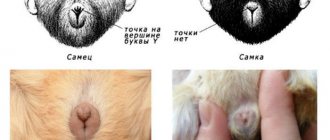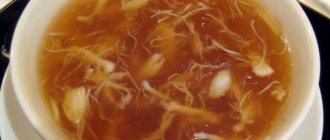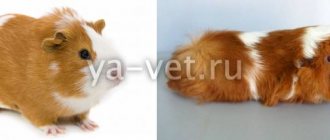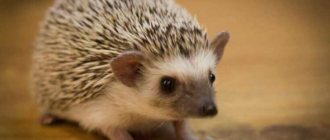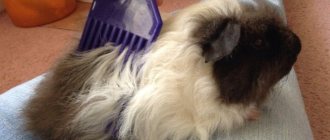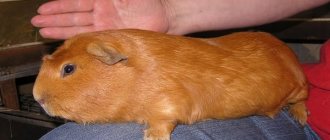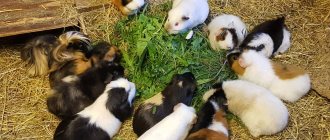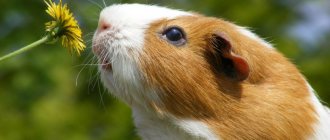Increasingly, guinea pigs are kept at home. However, many novice owners do not know that there are many nuances in caring for cavy. Take the fact that a rodent can die if it doesn't eat for at least one day. Therefore, it is better to find out in advance what it is, what it eats, what living conditions are necessary and how to properly care for such an animal.
Keeping and caring for a guinea pig
A guinea pig is a sociable and unpretentious pet, the maintenance of which does not require much hassle and significant expenses.
Guinea pigs are very friendly. They can show aggression or withdraw from contact only if the previous owner offended them, took poor care of them, and also if the pig was hurt or feels unwell. In all other cases, they communicate with pleasure, love to sit in your arms and play. Guinea pigs are intelligent, curious, and easy to train, so you can teach your furry baby to respond to his name, follow commands, stand on his hind legs, or give his paw in greeting. If you exercise with your pet for 10-20 minutes every day, then in a couple of months you will be able to entertain your loved ones and guests with amazing tricks.
The animals are very clean, they spend a lot of time caring for their fur and paws, and if you have several pets, they will help each other look beautiful. Stories that pigs have an unpleasant odor are completely unfounded. If the animals are kept clean and the owner changes the bedding twice a week, there will be no smell.
Another undoubted advantage of guinea pigs over other pets is hypoallergenicity. Pig fur does not provoke allergies, like the fur and fluff of other pets.
Keeping a guinea pig does not require much hassle or expense. Hay and hygienic cage bedding are inexpensive. The stores offer a wide selection of grain mixtures and treats to suit any budget. In addition to hay and grain, the menu should include fresh fruits, vegetables and herbs, and only seasonal ones. Giving exotic foods, for example, pineapples, mangoes, kiwis, as well as greenhouse vegetables: cucumbers and zucchini, is strictly not recommended in winter. In the summer, it is advisable to supplement the rodent's menu with fresh grass collected in a clean place. And guinea pigs just love parsley!
You shouldn't walk outside with your pig. Firstly, it is very stressful for the animal. Secondly, he can be injured by other pets, cats or dogs. Thirdly, a pet can “catch” an infection or parasites in the grass. However, it is very healthy for pigs to be active. What to do? Let him out of the cage to walk around the room for 30-40 minutes. But definitely under supervision. After all, this animal is a rodent, and wires, furniture legs, wallpaper, sofa upholstery can make her want to sharpen her teeth.
Guinea pigs do not require special care at home. You need to feed the animals 2-3 times a day and make sure that the water in the drinking bowl is clean and not stagnant. The bedding needs to be changed twice a week; cleaning the cage takes 10-15 minutes. As you can see, there are no special requirements. There is only one case where a pig will need daily care - if it has long fluffy hair.
The pet needs a small cage, with a base of approximately 40x70 cm, provided that the pig walks around the house every day. This compact cage is easy to install even in a small room. The height of the cage does not matter, since guinea pigs are not as fond of climbing ladders and labyrinths as rats or hamsters. A single-tier low cage with a house or other shelter is enough for them, where they can hide from noise and relax.
With proper nutrition and good care, the animal will delight you for 7-10 years. Guinea pigs, if well cared for, enjoy good health. Proper nutrition, hygiene and absence of drafts are the key to your pet’s health. This adorable rodent is the perfect pet for a child. Cute and friendly pigs quickly find a common language with their little owners and will give a lot of positive emotions. And children, taking care of an animal, become more responsible, attentive, and disciplined.
Microclimate
Overheating and hypothermia are the same and are harmful to animals. It is worth noting that it is more difficult for a rodent to tolerate heat, but if the temperature in the room is too low, the pig may get sick. Therefore, you should not keep the cage near the front door or open window. The optimal temperature for keeping a pet is considered to be 16-20 degrees.
The air humidity in the room where the animal is kept should be in the range of 50-60%. Too dry air can cause cracks in the animal's skin, and too humid air can cause a fungal infection.
Kewis are diurnal, so lighting is important for them. But rodents should be protected from exposure to direct UV rays of the sun.
As you can see, keeping a guinea pig is not difficult even for beginners. A guinea pig, the care and maintenance of which at home will not cause you much trouble, will delight all members of your family.
What should be in the cage
The minimum acceptable cage size for this rodent is 40x70 cm. The pet must have space to walk, and the larger the cage, the better. Do not forget that accessories will also occupy a certain place in the home: drinking bowl, feeders, house.
The best drinker option is a ball bowl. It does not create dampness in the cage, saves space, keeps the water clean - pieces of food and excrement do not get into it. However, you need to take care of the drinking bowl - change the water in it daily and wash it thoroughly so that plaque does not appear on the walls. The drinking straw should also be cleaned regularly with a cotton swab.
Drinking bowls are less practical: the water from them spills, the animal can wet its paws and tummy, and if the house is cool, then an unplanned bath can lead to a cold. The water in the bowl gets dirty quickly, so you will have to change it several times a day. The bowl also takes up quite a lot of space in the cage. However, it is easier to wash a bowl than a drinking bowl, and your pet will not make any noise while drinking.
Feeders for grain and succulent food should be different. There are plastic and ceramic models on sale, so you can buy the option that you like best. Plastic bowls come in a variety of shapes and colors, are made of safe material and are inexpensive. However, they are lightweight and guinea pigs tend to tip them over. Ceramic feeders are heavier and cannot be easily turned over. Clay bowls are versatile in design and durable.
Necessary accessories for a guinea pig cage include a house. Without shelter, the pet will feel uncomfortable, nervous, and perhaps even show aggression. Therefore, take care of a house or at least a canopy under which the guinea pig will hide, where he can set up a bed and feel comfortable.
To make your pet and you feel comfortable, you should purchase a hygienic litter. Granulated wood filler, both odorless and scented, and sawdust are available in stores. You can also use hay as filler in the cage. The filler needs to be changed 2 times a week. Another option is also possible: remove some of the soiled litter every day and add a handful of new litter - in this case, a complete replacement of the litter will be needed only once a week. This option is possible due to the neatness and cleanliness of the animals - they usually choose a certain place in the cage as a “toilet”, and cleaning this area takes 1-2 minutes.
Guinea pigs are indifferent to toys; an excellent entertainment for them can be a spikelet or a mineral on which they can sharpen their teeth. Pigs also like to create a space for themselves to rest and make a nest out of bedding or hay. You can offer the animal a small cloth napkin, and he will enthusiastically place it in the house as a sheet or pillow.
Rules for feeding guinea pigs
The basis of the guinea pigs' diet is grass and hay. There should be at least 60% of them in the daily menu. Grass is needed not only as a main source of nutrients and fiber. Rodents wear down constantly growing teeth on leaves and stems and maintain them in normal condition.
The remaining 40% of the diet is a grain mixture and succulent food in equal proportions. Grain supplies guinea pigs with natural proteins, carbohydrates, minerals, essential amino acids, and vegetables, fruits, berries and herbs are an excellent source of vitamins. Guinea pigs need more vitamin C than other rodents, so it is necessary to feed them with foods that contain large quantities of the vitamin: parsley, sweet peppers, celery, and if the pets don’t mind, then tangerines.
Spikelets, sticks and other snack treats complement the diet, make it more varied and help to wear down teeth, but they cannot be used as the main food.
Your pet should always have water, even if he doesn’t seem to drink it. Make sure that the water is clean and that the bottle does not turn green on the inside or acquire an unpleasant odor. Stale water can cause serious health problems for guinea pigs.
Veterinarians recommend feeding adult pigs twice a day, morning and evening. At the same time, uneaten succulent food and leftover hay should be removed so that mold does not grow on them. It is deadly for guinea pigs. Treatment of poisoning from spoiled foods does not always end successfully.
Reproduction
A male guinea pig becomes sexually mature at 8-12 weeks, and a female at 7-8 weeks. But the recommended age for breeding is 10 months and older. Animals forming a pair must be healthy, of the same age and the same breed, but they must not be relatives.
It is advisable that fertilization occurs no later than November. Estrus in pigs lasts 2 days and repeats every 12-20 days. The best time for mating is the first 12 hours.
The duration of pregnancy is approximately 10 weeks. Multiple pregnancies are often accompanied by early delivery. The future mother pig needs complete rest - she should not be picked up, stroked or otherwise disturbed. Any excitement is fraught with miscarriage.
Delivery lasts no more than half an hour. Piglets appear at intervals of 3-4 minutes. One litter usually produces 1-5 babies.
Grooming: brushing
Short-haired guinea pigs do not need special care for their fur; they do an excellent job on their own. If you want to give your pet pleasure, you can pet him once a week with a soft, short-bristled brush. The pig will probably like this massage, and at the same time you will comb the fur and remove some dead hairs. Pigs without hair will not need a brush at all, but with long-haired pets you will have to tinker. Guinea pigs with wavy hair require special attention, since one straw or blade of grass is enough to create a tangle.
The long-haired animal requires your daily attention - 10-15 minutes. First, the fur needs to be combed with a sparse comb, removing specks and untangling tangles with your hands. Then you should comb the coat with a thick comb and finally go through it with a brush so that the coat becomes shiny and lays down as desired.
If you comb it daily, it will not cause any particular difficulties, but if you comb the animal less often, it will be a longer and more labor-intensive process. And it’s also unpleasant for your pet, because when combing matted fur, he experiences pain, and the tangles not only spoil the appearance, but also cause discomfort: the skin under them begins to swell and become inflamed. If the tangle cannot be sorted out, you need to use scissors and carefully cut it out.
Animal Species
Friendly pets differ in color and fur length. Among them are the following colors:
- tortoiseshell;
- agouti;
- Dutch;
- 2 or 3 colors;
- Himalayan;
- Dalmatian;
- self.
Among the short-haired rodents, the following breeds are distinguished: Abyssinian, Rex, American (English), Teddy, Crested, Ridgeback. Among the long-haired representatives, there are Silk or Sheltie, Texel and Peruvian breeds. There are rodents that have no hair at all - Baldwin and Skinny.
Grooming: Bathing
Clean and tidy animals with proper care and regular cleaning of the cage do not need frequent bathing. Veterinarians recommend bathing pigs 1-2 times a year. But if your pet gets dirty in any way, bathe as needed. Use special shampoos for spa treatments - you can buy one bottle and it will last for several years. For show animals, you will also need a conditioner or balm, which will make the fur silkier and shiny.
You need to bathe your pig carefully so that water does not get into the eyes, ears and nose. The animal should be lowered into a container of warm water so that the head and upper back are not submerged in the water. Then wet the fur with water and apply shampoo, rub it over the fur with smooth movements so that the fur does not tangle, and then use a sponge to carefully rinse off the shampoo. The product must be washed off thoroughly, otherwise your pet may develop dermatitis and other skin diseases.
After bathing, quickly dry the animal with a towel, comb it a little with a sparse comb and then dry it thoroughly with a hairdryer so that the hair does not become tangled during the drying process. Short-haired pigs can then be brushed with a soft brush. For long-haired dogs, the standard combing procedure is performed: with a sparse comb, then with a thick comb and a brush. After bathing, make sure that your pet is not exposed to cold or drafts - guinea pigs catch colds easily.
The history of the appearance of the rodent breed
Representatives of South American tribes began breeding wild guinea pigs. These individuals were not like modern individuals with fluffy fur. After the discovery of America by Columbus, representatives of these rodents began to be brought to Europe.
Peru is considered the birthplace of sea pets. In ancient times, they were found in almost every home, but they were eaten and not kept as pets. Wild representatives of the breed had a dark color - black or brown.
They ran in flocks across the fields, hiding in dense bushes when danger arose. Rodents were bred for food.
Domesticated small rodents were called marine not because of their great love for sea fun and water procedures, but simply because they were brought from sea voyages. Cute and funny individuals were brought mainly from America and, due to the fact that they make a squeak, similar to a grunt, they were called pigs. They are capable of making different sounds, especially if they are very frightened.
How to take care of your teeth
Guinea pigs, like other rodents, have incisors that grow throughout their lives, and to prevent them from causing health problems and injuries, they must be constantly ground down. Usually pets do an excellent job of this task without outside help. You only need to provide the animal with everything it needs: hay, grass, hard vegetables, delicacies-spikelets on a solid base. There must be chalk or mineral stone in the rodent's cage. It is needed not only for grinding teeth, but is also a source of calcium, a microelement necessary for strong bones and teeth, and good health in general.
You can also offer the rodent branches of fruit trees, peeled from the bark: apple trees, apricots, pears, etc. For many pets, gnawing on sticks is also an exciting pastime.
If you give your guinea pig only soft food, its teeth will begin to grow rapidly and will interfere with eating and hygiene. If this happens, contact the clinic. Veterinarians will trim your pet's teeth to the desired length and tell you how to avoid this problem in the future.
Tips for choosing a leash
The anatomy of pigs is not designed for collars. One wrong move can seriously injure your pet. If you leave it free, the animal will slip out. Therefore, harnesses are the best choice for walking. They come in several types:
- In the form of a vest.
- In the form of belts.
- In the form of a figure eight.
Any of them can be purchased at a pet store or sewed yourself. The choice of harness type depends only on your pet’s preferences. The pig should be able to move comfortably and movements should be natural. There is a gap of one finger between the harness and the pet's body, which will prevent squeezing.
Claw care
Claws on the paws do not grow quickly, but eventually reach an unaesthetic length and begin to interfere with the pet’s hygiene. On the front paws, overgrown nails curl up and interfere with walking, causing deformation of the toes. This is why your guinea pig’s claws need to be trimmed a couple of times a year. To do this, you will need special tweezers or the smallest nail clippers, as well as a regular nail file.
The claw must be trimmed so as not to touch the blood vessels, otherwise severe bleeding will begin and the animal will experience unbearable pain. Nail trimming should be done carefully and without haste. The cut should be made strictly perpendicular to the growth line so that they do not delaminate during the pruning process.
